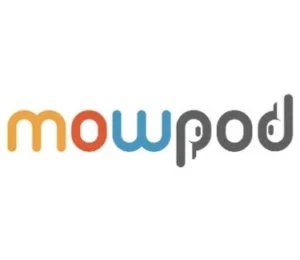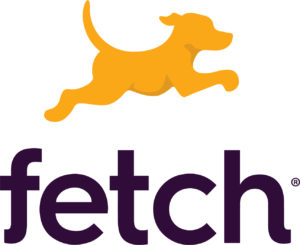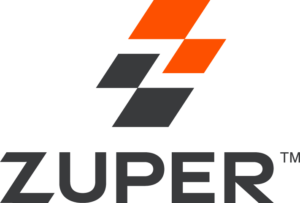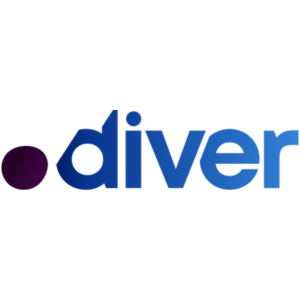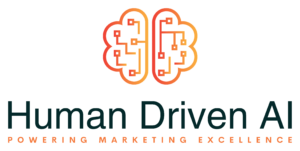Setting up a community for long term success — Jacob Peters // Commsor
Jacob Peters
Commsor
- Part 1The value of owning your community
- Part 2 Setting up a community for long term success — Jacob Peters // Commsor
- Part 3How to drive engagement & results from your community — Jacob Peters // Commsor
Show Notes
Quotes
-
“When it comes to building a community, the things that you need are a reason for people to gather, and a reason for people to re-engage. When it comes to for people to gather, it has to be shared affiliation, shared experience, or a common interest among folks.” -Jacob“Considering the spectrum of niche vs. broad is a very important first step to thinking about starting a community. A lot of people make the mistake of going too broad at first. Like, ‘Okay we are going to create the ultimate community for marketers’ but when you start to peel back the onion of what that could entail, there are different subsets of marketing like SEO, outbound, paid advertising, and podcasting as a channel for example. When it becomes that broad, there aren’t many people out there going to resonate with that.” -Jacob“But if you say, this community is just for marketing ops professionals, it’s a very specialized subset of the marketing field. That is a much stronger reason for people to gather than something that is a bit broader.” -Jacob“Now you can go and make the mistake of being too niche and too specific and that could not be enough in terms of volume.” -Jacob“The important thing to think about here is, you have to know your audience and understand the value that you are providing to them. I don’t want to create a generic business network for a community, that already exists, it’s called LinkedIn and people can already have conversations on LinkedIn.” -Ben “Now there are groups on LinkedIn that might not be sufficient. Maybe there’s a MarTech community on LinkedIn and is just not really useful and full of spam. But we want to actually build real relationships and communication to be able to provide outside value.” -Ben“If you start a community in the MarTech for example, that is a profession. That is a reason why people wake up in the morning and it is oftentimes something that people get passionate about. There is basically a reason to know all there is to know about the space, keep your pulse close to what’s new and topical interms of new marketing tools that might be launching, or if you are going through a career transition maybe you want to connect with other marketing tech professionals, and learn about their jobs or find a new job. There is a myriad of reasons that can becreated so people can re-engage.” -Jacob“The next thing to consider when starting a community is the tools and platform in which your community is going to live and the ways it facilitates the experiences for members.” -Jacob“There are three big ones that come to mind when it comes to trade-off. Number one is the engagement mechanism for community members. Second is the way in which people interact with the platform, and kind of their habits essentially. The third is your ability to own the community.” -Jacob“When it comes to engagement there are obvious differences between platforms like Slack vs Facebook Groups vs something like a forum. On Slack, it’s chat-based so the nature of the content and engagement and messaging between members is very ephemeral. That makes it sometimes tough to keep up with the fire hose and flood of information and continuous messages but at the same time, if you have a question that needs an urgent answer, there is a greater sense of immediacy.” -Jacob“As opposed tosomething like a forum where somebody posts a message, two weeks later another member can come back and post at that message and it’s not lost in the deluge of incoming chats so things are a bit more long-standing from that regard.” -Jacob “The second one is the relationship of the members with the tool itself and what I mean by that is for example on Facebook, you’re using the Facebook platform as your community tool of choice. A lot of people already have Facebook so there is no new app to download, users are already there and for Facebook members, on average they are checking in there a few times a week. So there is a natural re-engagement loop built back in there.” -Jacob“As opposed to, if you decide to start your community on a custom app orcustom forum that lives on the silent corner of the website, or people will then have to download something completely new, that is very high friction which makes it tough for people to engage in the first place or even if you get them over to hump for them to keep coming back for more. They are only going to engage with you if you choose a white-label platform or a custom application, or a forum that lives on your website if they have an explicit reason to come to the community. It is not something that is built into their weekly and daily habit flow.” -Jacob“The third consideration to think about when it comes to picking a community tool or platform choice is the ownership you have with the community. If you start a community on something like Facebookgroups or LinkedIn, you don’t own that. You don’t own the data. The social media platforms control the rules of engagement, they can change things at any time.” -Jacob“Another consideration there is API access. When it comes to a community there is a lot of valuable information that can be extracted about your members. With a lot of social media platforms, they have more closed architecture and it’s harder to get information out whereas compared that to something like Slack, they have robust APIs so youare able to pull member information.” -Jacob“The other thing is the content that you are able to generate from the community and do things with. This is an important consideration because the big benefit of the community is the content that your members can generate on your behalf.” -Jacob“Onboarding is something that is very overlooked but very crucial when it comes to the community experience. The feeling that you are able to invoke from a community member in the first few minutes, hours, weeks of their experience sets the cultural tone for the remainder of their community experience is going to be like.” -Jacob“You need to be very purposeful about the way in which you onboard members. It’s no longer enough to just send an invite to a Slack community or tell them to join this group on LinkedIn. You have to really take the time to do non-scalable things for the community like send one-to-one personal messages to each of your members.” -Jacob“It is actually possible for a community to grow too fast. There is a saying out there in a community role that, ‘The right ten members is more powerful than the wrong thousand members’, which I think is a pretty powerful statistic.” -Jacob“The biggest one is to follow and lead by example. As an example in our Slack community when we ask people tojoin, we always make it a point to emoji react and comment and welcome new members on every single post. What starts to happen is that existing members also pad new comments to that. They followed our lead by example.” -Jacob“The summary for me here iswhen you are thinking about building a community, you have to think about how are you going to position your community. It’s like when you are launching a brand, you have to make sure that you are building something that fits with your audience.” -Ben“Then there is the delivery mechanism. Instead of building your own platform you can use the existing platforms and take advantage of the existing user behaviors that your audience already exhibits.” -Ben
- Part 1The value of owning your community
- Part 2 Setting up a community for long term success — Jacob Peters // Commsor
- Part 3How to drive engagement & results from your community — Jacob Peters // Commsor
Up Next:
-
Part 1The value of owning your community
Today we're going to discuss the value of building a community as a marketing channel. Joining us is Jacob Peters, a Co-Founder of Commsor, which is a community control center that places powerful analytics, automations, and engagement tools for world-class communities, focusing on B2B SAS brands. In part 1 of our conversation, we're going to discuss the value of owning your community.
Play Podcast -
Part 2Setting up a community for long term success — Jacob Peters // Commsor
Today we're going to discuss the value of building a community as a marketing channel. Joining us is Jacob Peters, a Co-Founder of Commsor, which is a community control center that places powerful analytics, automations, and engagement tools for world-class communities, focusing on B2B SAS brands. In part 2 of our conversation, we're going to discuss how to set up a community for long-term success.
-
Part 3How to drive engagement & results from your community — Jacob Peters // Commsor
Today we're going to discuss the value of building a community as a marketing channel. Joining us is Jacob Peters, a Co-Founder of Commsor, which is a community control center that places powerful analytics, automations, and engagement tools for world-class communities, focusing on B2B SAS brands. In part 3 of our conversation, we're going to discuss how to drive engagement and results from your community.
Play Podcast




